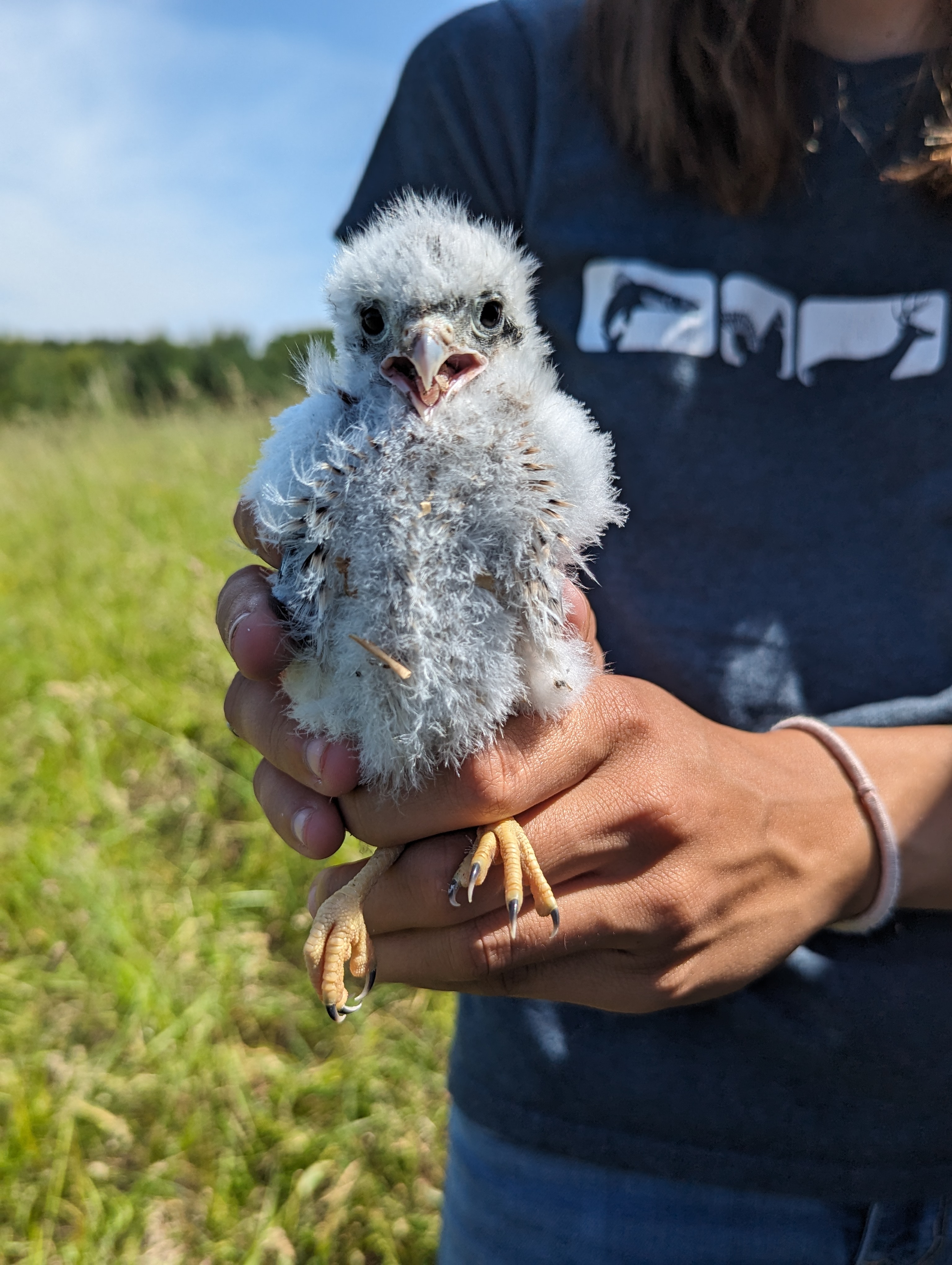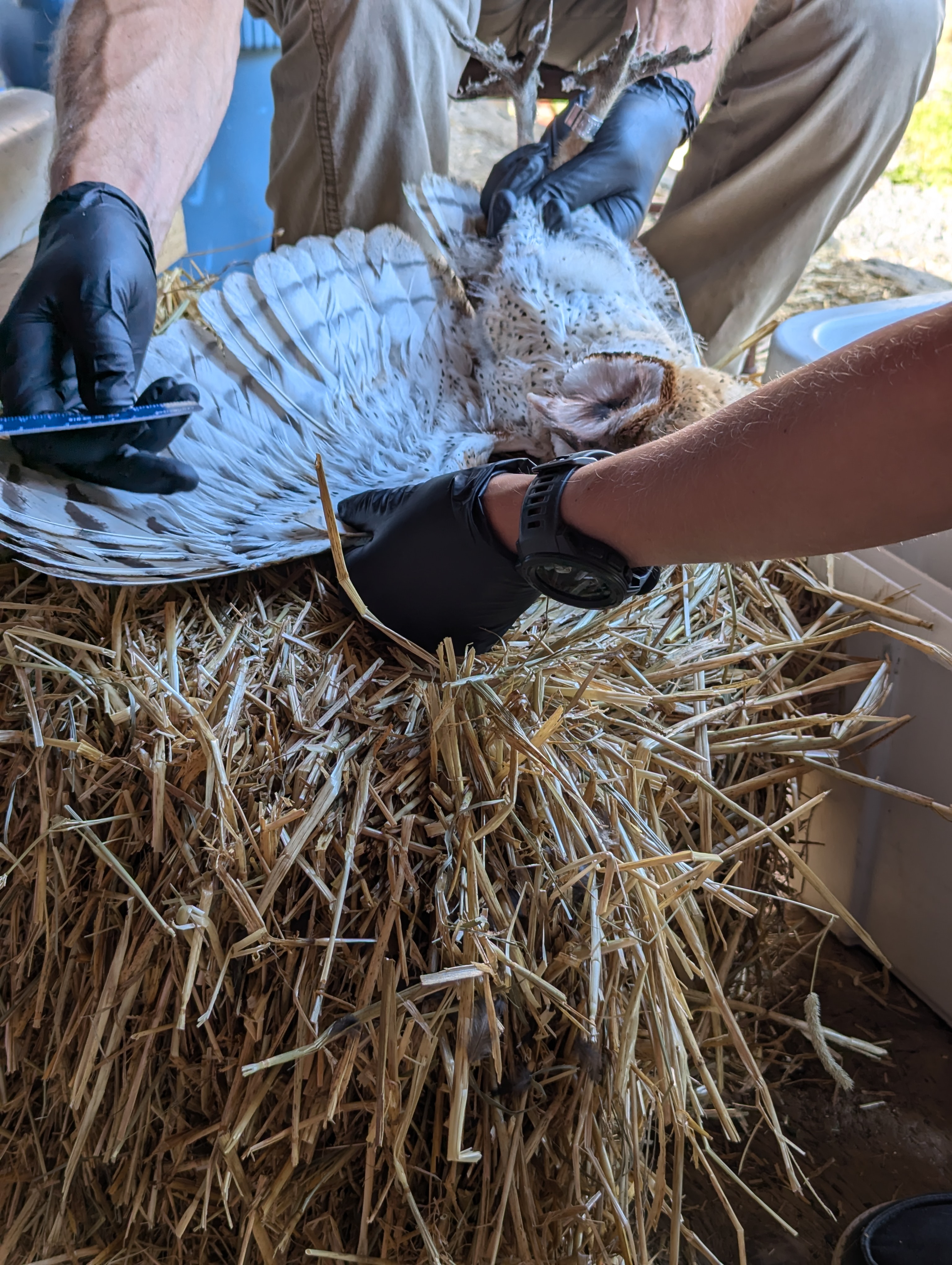Why Do We Band Birds

Did you know the American Kestrel is North America’s smallest birds of prey? Or that a barn owl from Pennsylvania was found in the Bahamas? That's over a thousand miles away! How about the fact populations of Canada geese had boomed once again since 1935 when there were almost no nests left in Pennsylvania? These are only a few cool facts about some of the 430 bird species in our incredible state!
Every year, the Pennsylvania Game Commission conducts surveys to learn how many birds are in the area and how that relates to different hunting seasons. Banding also helps researchers better understand migratory patterns and what changes might happen from one year to the next regarding access to food, weather conditions, day length, and genetic variations. Due to size differences, our biologists must become experts in handling each of the different bird species such as Canada geese, barn owls, and kestrels. For example, the American kestrel is only 25-30 cm in length and has a wingspan of about 63-80 cm. Canada geese are much larger at 25-50 inches in length with a wingspan of about 75 inches. The barn owl falls in the middle at 10-17 inches long with a wingspan of around 40-50 inches.

An American kestrel chick being held carefully during the banding process
The banding process is different for each of these birds. Kestrels nest in bird boxes that keep the petite chicks enclosed and protected. These boxes also allow researchers to know where nests are located and see how many chicks are in each box. They must remove these little nestlings from the nest box and put them in a cloth bag to keep them safe for processing. They weigh and age them based on how much their flight feathers have grown. Then, researchers place a small metal band on their tiny legs. Don't worry — they don't feel a thing. Sometimes they also take blood and feather samples to a laboratory for further research.

An owlet getting its wings measured to determine its age
Like the American kestrel, barn owls also nest in boxes, but these boxes are much larger since barn owl chicks are much larger than kestrel chicks. The process of banding these also includes putting the owlets safely in cloth bags or bins so they are contained and protected. The only difference is researchers put owlets in a tube so they stay calm and don’t get overstimulated during banding. The next step in this process is to measure the owl's wings. The longer the wing feathers, the older the chick. The last thing these biologists and interns do is take blood samples from the owlets and send them to a lab for analysis. These owls can migrate as far as the Bahamas, so it’s important for our biologists to gather this data to better understand migratory trends and evaluate the underlying health of a bird.
.jpg)
Biology interns getting up close and personal in the fencing with Canada geese
Canada geese are game birds and not raptors like the American kestrels and barn owls. The whole process of banding geese is exciting because researchers must get out on the water to corral these larger birds into fencing. Then, they determine if the baby geese, also called goslings, are male or female. After they band all the goslings, they move on to the adults. Finally, when all the birds are banded and sorted into males or females, they are set free back into the wild. Throughout this process, we keep both the geese and researchers safe by wearing appropriate protective clothing such as gloves and long-sleeved shirts.
So now you know how the Game Commission researches various game and raptor species here in Pennsylvania. This information is vital to the survival and proliferation of these birds so their populations remain stable. As part of its mission, the Pennsylvania Game Commission is committed to preserving and conserving wildlife in the Commonwealth for current and future generations, and researching our different bird species is just one step in making that mission a reality.
Madison Carlini
Madison Carlini is a student at Penn State University and an information and education intern with the Pennsylvania Game Commission. She’s been around the agency her entire life and values helping not just hunters and their families but also keeping the environment and wildlife populations stable.